A Guide to Choosing the Right Headcap for fNIRS Studies
In multi-channel fNIRS (functional Near-Infrared Spectroscopy) studies, the headcap is one crucial piece of equipment for researchers and participants. A comfortable headcap helps participants stay focused during long sessions, while a well-fitted headcap ensures that NIRS optodes remain securely in place, leading to high-quality data collection.
At Artinis, we’ve developed our fNIRS headcaps with significant improvements over the traditional options. Our headcaps are ergonomically designed to evenly distribute pressure across the scalp, while also covering the frontal and occipital cortex completely. The fabric is lightweight, light-absorbent (essential for fNIRS), and durable, even with extended use.
Artinis headcap grid
Since 2015, Artinis has been at the forefront of fNIRS headcap design, combining comfort, flexibility, durability, and reliability to meet the evolving needs of the research community. All Artinis headcaps come equipped with printed fNIRS grid systems and the EEG 10-20 system markers, providing precise and consistent optode placement.
Our grid system features a standard 30 mm distance between optodes. This specific spacing is crucial for maintaining the proper distance between transmitters and receivers, ensuring the integrity of your fNIRS data. Additionally, our headcaps ensure that all optodes are aligned straight and maintain firm contact with the scalp, contributing to accurate and reliable measurements.
Crafted from neoprene, our headcaps strike the perfect balance between flexibility and sturdiness. The material allows the cap to adapt to various head shapes while still maintaining consistent optode distances. With the right thickness, our headcaps ensure that optodes remain securely in place throughout the experiment, supporting stable and high-quality data collection.
For more information regarding how Artinis headcap developed, read the Just a Simple Cap blog post.
Figure 1,2: Artinis headcap’s grid on headcap with and without pre-determined holes
Key considerations in selecting the right headcap for your study
Here are four essential factors to help you choose the best headcap for your research and participants:
Define the area of measurement
The area of the brain you're studying will guide whether you need a headband or a full headcap. If you're studying the prefrontal cortex, a headband may be the most suitable option. Artinis offers two ready-to-go solutions for prefrontal measurements:
Brite Lite Frontal: A compact 8-channel fNIRS system equipped with a headband for measuring the prefrontal cortex.
Brite Frontal: A 24-channel fNIRS system designed for comprehensive prefrontal cortex studies, featuring a wider headband for enhanced coverage.
For studies requiring data collection beyond the prefrontal cortex, the full headcap offers optimal coverage.
Choose between a pre-punched headcap with a pre-determined grid or one without holes —ready for a custom grid
Deciding between a pre-punched optode grid or a customizable one relies on your study's specific requirements. At Artinis, we offer two types of headcaps:
Pre-punched headcap/-bands with pre-determined holes: These headcaps come with pre-punched holes based on a standard 30 mm inter-optode distance grid, simplifying both setup and optode placement. The predefined grid is ideal for studies where the standard optode distance is sufficient, allowing for quick and accurate measurements. This option offers convenience and reduces the margin for error in optode placement and inter-optode distances. Of course, when necessary, it is possible to punch extra holes in this headcap using the punch toolkit.
Headcap without premade holes: This option is ideal for studies that require precise optode placement, especially when working with multiple participants of varying head sizes. It's important to know that the standard placement of optode holes may vary between headcap sizes to maintain consistent inter-optode distances, and larger sizes mean covering a broader area.
With a headcap that doesn't have pre-punched holes, you have the flexibility to create your own grid using our punch toolkit, allowing for fully customized optode layouts and inter-optode distances. While this customization offers greater control, it requires careful planning to ensure consistency within a single headcap and across different sizes. This approach is recommended for experienced researchers who are familiar with creating measurement grids.
Figure 3: Artinis punch toolkit
📝 Recommendation:
Inexperience in grid design can lead to inconsistent optode placement, which can impact data accuracy, especially when working with multiple headcap sizes. For those new to custom templates, consider starting with a pre-punched grid to avoid potential data inconsistencies from improper optode placement.
If your study incorporates Short Separation Channels (SSC), there's no need to worry about compatibility. Although the SSC holder is larger than a standard optode holder, it fits well into the pre-punched holes of our headcaps. We do recommend removing the SSC holder after each data acquisition session to maintain the tightness and integrity of the headcap’s holes.
In studies involving multimodal approaches, such as fNIRS-EEG, careful consideration is essential when selecting the appropriate headcap. Some pre-made holes in the headcap may overlap with standard EEG electrode locations. Refer to this article for detailed guidance on integrating fNIRS and EEG effectively.
Ensure a perfect fit for all participants
For studies involving sensitive populations, such as children or elderly participants, comfort is critical. Artinis headcaps come in various sizes to ensure a snug, comfortable fit.
To find the right headcap/headband size for the participant, the participant's head circumference is needed. First, start with a flexible measuring tape, e.g. a tailor's tape. Place the measuring tape around the head, over the ears, and around the back of the head at the point where the skull protrudes the most (the occipital bone). Usually, it's about two fingers above the eyebrows (just above the brow ridges). Ensure the tape is level and evenly positioned around the head. Finally, record the number where the end meets the rest of the tape.
Figure 4: How to measure head circumferences
| Head circumference (cm) | Headcap size | Headband size |
| 49-51 | XXS | - |
| 51-53 | XS | - |
| 53-55 | S | S-M |
| 55-57 | M | S-M |
| 57-59 | L | L-XL |
| 59-61 | XL | L-XL |
Prioritize durability and maintenance
Artinis headcaps are designed for long-lasting use and easy maintenance. To clean the headcap, simply hand-wash it in lukewarm water with a mild detergent, then dry it with a towel or let it air-dry in the shade. With proper care, your Artinis headcap will remain durable and reliable for repeated use in research settings.
For complete information on device cleaning, refer to our blog post: How to clean your Artinis NIRS systems and accessories?
💡 Additional tips: How to wear the headcap correctly
To ensure accurate measurements, it's vital to place the headcap properly on the participant's head. Placement affects which brain areas are measured.
At Artinis, we recommend the "dunking the head" technique for an easy and flawless application:
Hold both ear holes of the headcap with the front facing the same direction as the holder.
Scoop the participant's forehead into the headcap first, allowing the rest of the head to follow smoothly.
Once the cap is in place, check its symmetry using the height of the clips at the sides of the head. Ensure the cap is pulled down just above (or over) the eyebrows.
Figure 5: How to position the headcap/headband correctly.
Contact us
If you have any further questions about choosing or applying the right Artinis headcap for your study, feel free to reach out to us at askforinfo@artinis.com. We're happy to help!


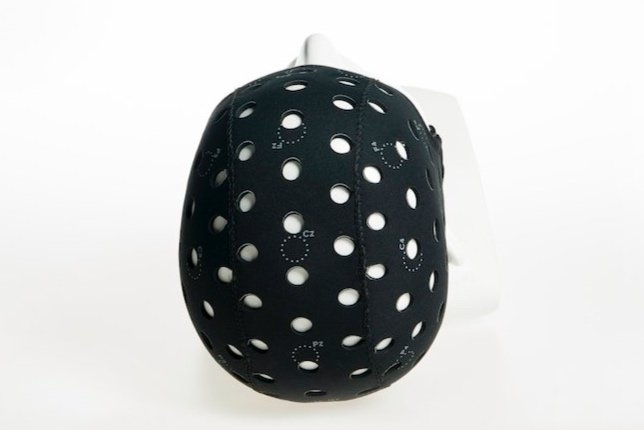



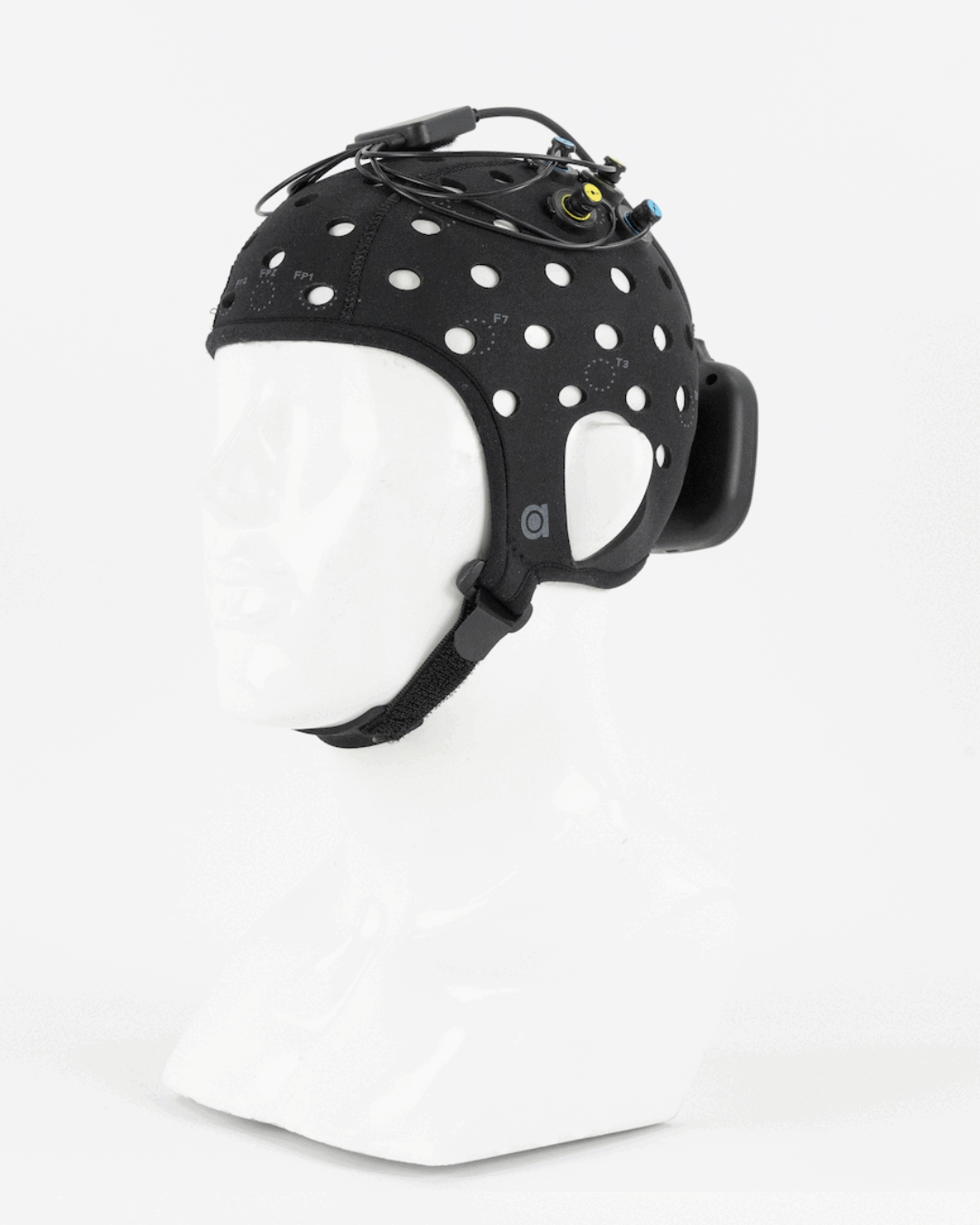
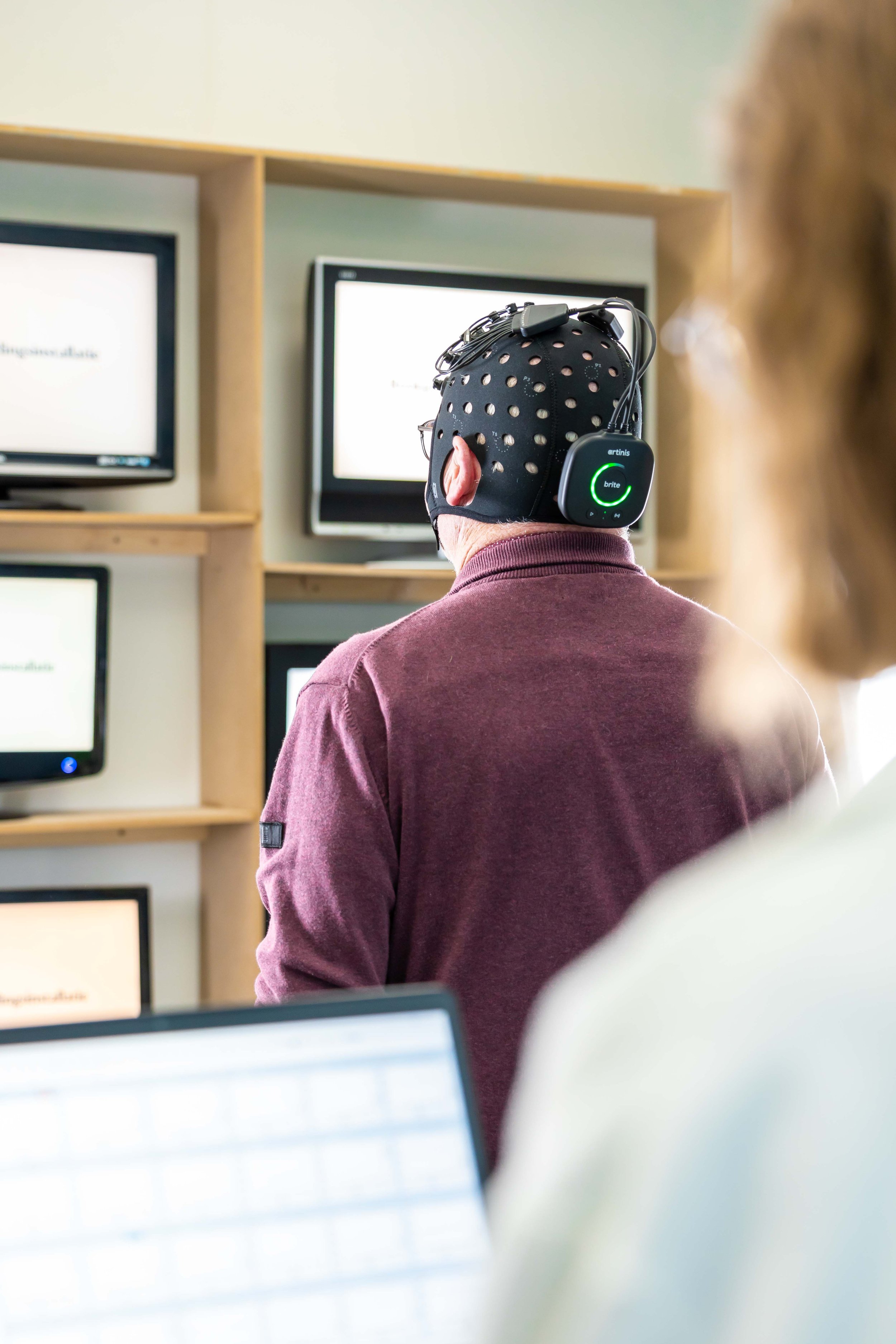
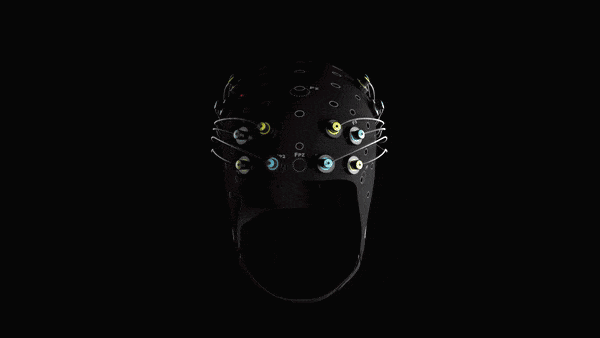

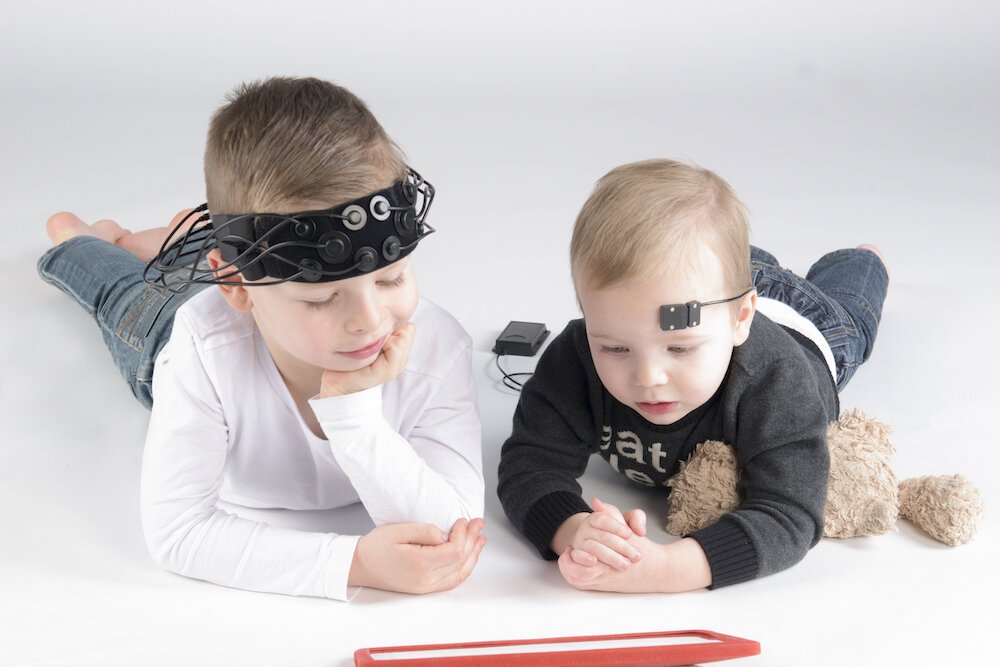
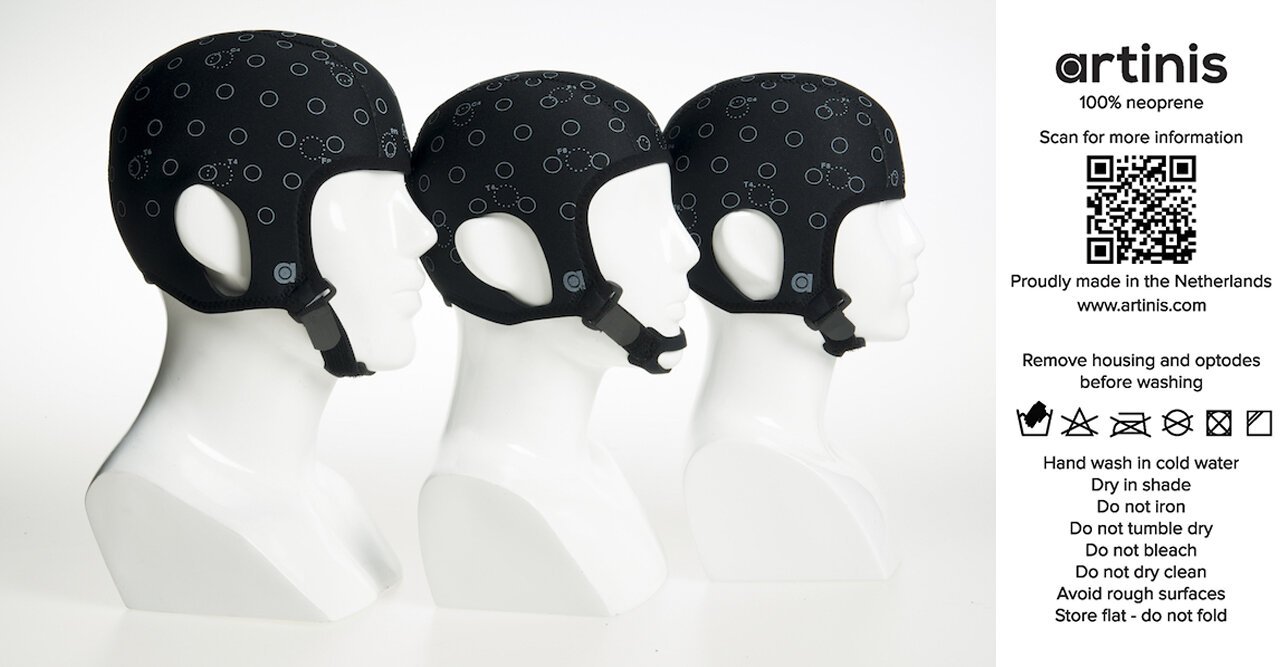
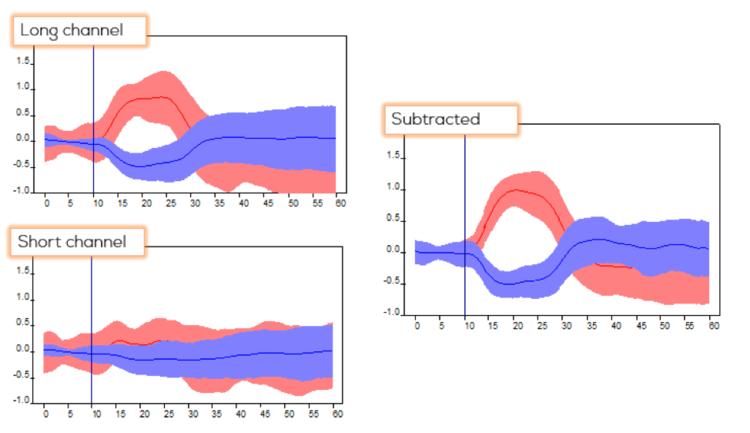
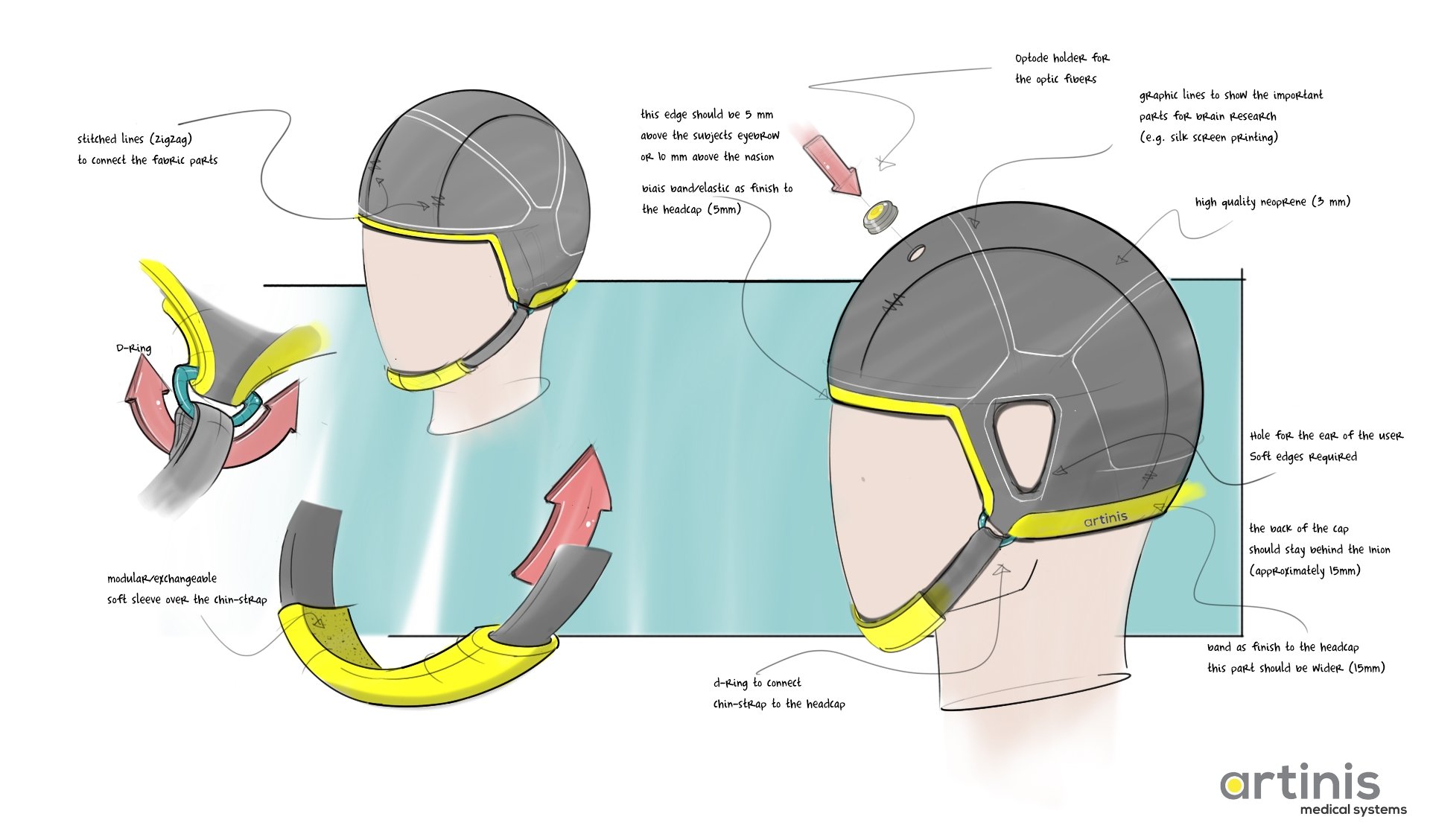

Combining fNIRS and EEG is gaining increasing popularity in neuroscience, allowing for the best of both worlds to be combined. One challenge in multimodality measurements can be interference (also known as crosstalk), especially when fNIRS optodes and EEG electrodes are placed close to each other. In this blog post, we demonstrate that it is possible to achieve high-quality EEG recordings without interference during simultaneous measurements with the Brite (fNIRS) and APEX (EEG) devices.